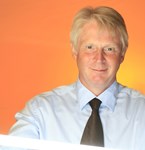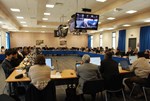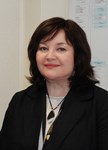When the Director of the International Energy Agency (IEA), Nabuo Tanaka, came here last week to present the world energy outlook—a "reality check" as he called it—we were once more confronted with the fact that the ball is in our court. The world needs energy and hopes are on fusion to contribute sooner rather than later. So here we go ...
A hundred things are going on at the same time as we prepare for the final showdown for Baseline approval by the ITER Council in June. Scope-schedule-cost are all lining up. Only three weeks after the recent meeting of the Management Advisory Committee during which its members endorsed the schedule, we received a letter from the Council Chairman Evgeny Velikhov, giving us the green light to prepare all documentation on that basis. This paperwork and planning still dominate the scene, but there is also real action happening.
Over the last days, specialists with expertise in the assembly of tokamaks and other fusion-related devices convened in Cadarache to assess whether our approach to ITER's assembly and installation is sound and consistent with the scientific program to be executed in parallel. Impressive numbers on cables to be pulled, cryogenic connections to be made, water fittings to be applied and people to be mobilized over two shifts are being discussed with always the same questions in mind: Can it be done? Is it enough? Have we overseen something? Can we safely meet the scheduled target dates for First Plasma in 2019 and Deuterium-Tritium operation in 2026? The chairman, Rem Haange, a weathered fusion engineer in charge of installation of Wendelstein 7-X in Germany, as well as Kenichi Kurihara from Japan, Joo-Shik Bak from Korea and Charles Neumeyer from the US who have all spent a good fraction of their lives in the trenches of one or another construction project, came to the conclusion that meeting the goals is feasible. But don't be mistaken ... we will have to pool all our strengths to meet the schedule.
Another big group involving future ITER users from all around the world met this week to discuss a longer-term research program relating to the impact of the Test Blanket Modules (TBM) on ITER plasma performance. TBMs are crucial to producing large-scale commercial fusion energy, as they will produce the fuel for fusion by generating tritium from lithium. The principle is well understood but the technology will be tested on ITER. The question going around within the team of international experts pertained to the potential influence of materials on plasma confinement and performance when used to construct TBMs. R&D driven by the all participating countries will have to address this question.
With the signatures of the Architect Engineering (A/E) contract between ITER's European Domestic Agency and the consortium ENGAGE—and also the company Apave for the Health and Safety Protection Coordination and Legal Inspection Services—we have reached a point where some people should get their shovels ready. ENGAGE is determined to finalize the construction drawings as fast as possible. At the same time, excavation of the pit for the Tokamak Building will begin this summer. Design and building will go on in parallel and we have worked feverishly to finalize all documentation to give them no time to breathe. Twenty-eight 3D configuration management models plus hundreds of further drawings, process flow diagrams and interface documents are ready to be transferred. We have all been eager to see building activity on site .... and now it will happen.
Then we received word on progress in manufacturing from our colleagues in Japan. The first copper dummy conductors and also superconductors for ITER's toroidal field coils have been successfully manufactured and shipped from Nippon Steel in Kitakyushu to a Toshiba Corporation facility in Yokohama where the hardware will be stored for completion of acceptance procedure as required by the Procurement Arrangement before start of winding trials. To actually see a ship carrying hardware produced for ITER is a moving moment and I can't wait to see the first shipload arriving in Fos-sur-Mer.
And, last but not least, the final internal review to check all interfaces with the vacuum vessel was completed. As the manufacturing of ITER's vacuum chamber is staged to begin, this was an essential step for the project. At the end of May we will deliver the detailed 3D models of all nine vessel sectors and the 44 ports to the contributing Domestic Agencies in Europe, India, Korea and Russia. There, the models will be turned into manufacturing drawings by companies that have already been selected, and cutting metal will shortly follow.
More and more, the expression "time is money" becomes true. As more companies come under contract, every lost day costs about EUR 1 million. When all contracts are in place, that figure will rise to EUR 4 million per day. We can not afford to be late and we won't. We will deliver!
|
Today, Tuesday 13 April 2010, the Architect Engineering contract for the majority of the ITER buildings was signed between the European Domestic Agency "Fusion for Energy" (F4E) and the ENGAGE consortium.
The Architect Engineering contract worth EUR 150 million not only represents the biggest contract awarded in the scope of the ITER project, but also one of the biggest engineering contracts ever signed in Europe. It covers the construction of the entire ITER complex including 29 out of a total of 39 buildings, site infrastructure and power supplies.
The ENGAGE consortium is made up of four European companies: Assystem (France), Atkins (UK), Empresados Agrupados (Spain) and Iosis (France). It is expected that more than 230 engineers and designers will be working under this contract.
A second contract for the Health and Safety Protection Coordination and Legal Inspection Services was signed today with the Marseille-based company Apave. This contract worth EUR 9 million will assist F4E to ensure the general prevention of any risks associated with the performance of the works from the implementation of the Architect Engineering contract. It is expected that 18 senior engineers and experts will be deployed on the site.
"These signatures certainly mark another two important milestones on our way," ITER Director-General Kaname Ikeda said on the occasion. And Frank Briscoe, Director of Fusion for Energy added that there are more contracts in the pipeline. "ITER is becoming alive," Briscoe picked up Ikeda's words, "the project is picking up speed."
For more information, click here...
Ripples are not exactly a fusion scientist's best friend. These sinusoidal perturbations can influence plasma confinement and thus performance and power gain. A "ripple" in a fusion plasma can be compared to a ripple on the surface of water. When you stick your finger into the water, waves spread in a radial direction. In the ITER configuration, the "finger" can be a toroidal field coil, or a Test Blanket Module (TBM).
This week, a group of fusion scientists from all around the world met to discuss the possible impact of the TBMs on plasma performance in ITER. The main question addressed pertained to the ferromagnetic steel used for the TBMs and its potential influence on plasma confinement and performance. From simulations and experiments run on tokamaks such as JET, Alcator C-Mod, DIII-D or JT60-U it has become clear that ripples have a negative influence on H-mode confinement, but it is not yet clear what level of ripples is acceptable for ITER.
"The bottom line is that they are not likely to degrade performance in the early low-performance phase of ITER operation," explains Joe Snipes, ITER's Senior Scientific Officer for Integrated Scenarios. "However, they are likely, with the present designs, to degrade performance in the later high-performance phase. Unfortunately, the uncertainties in the extrapolation of the present results to ITER make it very difficult to quantify this result accurately enough to predict exactly how much ferromagnetic material near the plasma would be acceptable in the TBMs."
In the course of this week's two-and-a-half day endeavour, the team of international experts screened the existing database and discussed a variety of possible countermeasures including a reduction of the amount of ferritic steel used in the modules, insertion of correction coils or a recess of the TBMs away from the plasma. "It is quite a rare occasion to have physicists and engineers working and discussing together to reach a common goal," explains the meeting organizer, Luciano Giancarli, Chief Technical Officer in charge of the TBM Program in ITER. "The goal is to permit the performance of the most valuable TBM Program in ITER."
The decision was made to continue with the present designs with an understanding that the TBM teams should try their best to minimize the amount of ferromagnetic material while still maintaining the TBM mission goals. In the meanwhile, physicists will propose new experiments and attempt to refine the theoretical models to better estimate the amount of ripple-producing ferromagnetic material that is acceptable without degrading ITER performance too much. "Knowing exactly how much is too much can probably only be determined with high performance deuterium or deuterium-tritium experiments on ITER," says Joe Snipes.
"The ripples induced by the TBMs fall in the range where there are large uncertainties on the ripples effects and, therefore, further studies and experiments have been defined in order to reach clearer understanding in the next few years," Luciano Giancarli adds. "In the meantime, TBM designs can keep the present ferromagnetic mass provided that an effort will be made to reduce them before 2013, when the TBM conceptual design review is planned. In any case, the corresponding risks and tendencies are now much better identified and both physicists and engineers are well informed."
In March this year, the ITER Council Management Advisory Committee decided to set up a small working group comprised of a limited number of specialists with expertise in the area of tokamak assembly, and the assembly of other fusion-related devices. Their role was to assess the viability of the ITER installation and assembly plan leading to First Plasma in November 2019 and on to deuterium-tritium (DT) operation in 2026.
This week the working group chaired by Remmelt Haange, Technical Director of the Wendelstein 7-X Stellarator Experiment in IPP Greifswald, Germany and including participants from the Domestic Agencies, convened in Cadarache for a full five days. It examined the path forward, assessing whether the operational aspects of testing and commissioning all systems have been taken into account, as well as French labour law issues, and global transport and logistics issues.
"Meeting the goal is possible," Haange summed up the outcome of the four-day effort. "By looking at it from all angles we have identified a number of issues that need to be addressed in order to mitigate eventual risks. The ITER Organization will act on these." The Chairman added that he was "very impressed by the work that was done within a very short time. We were given an enormous amount of information."
With thirty years of experience behind her, Sandy Holt knows a thing or two about auditing. But how did it feel to move away from her native Tennessee, toward a country where she had never before set foot, to accept the position as Internal Auditor at ITER?
"I hardly hesitated," says Sandy. "People kept saying 'But you've never been to France before!' That didn't bother me. It's a little daunting, but exciting also. ITER is out at the cutting-edge, and working here is a great opportunity for me."
As Internal Auditor, Sandy's role will be to provide the ITER Director-General with independent and objective analysis pertaining to the "larger picture" at the ITER Organization. "We're the ones who ask questions like: What will keep the ITER Organization from attaining its stated mission? What are the risks? How can we improve the processes?" explains Sandy. "That's especially challenging in a young organization." Sandy will assist the Director-General by furnishing analyses, appraisals, recommendations and counsel concerning the activities reviewed.
For now, she's working side-by-side with Joachim Kuhn, who has been the acting interim Internal Auditor since the month of August, "effectively and efficiently" performing the auditor functions. Joachim will be leaving ITER at the end of April.
Sandy graduated from the University of Tennessee with a degree in Accounting, and worked as an auditor for the State of Tennessee for many years. Widowed, and with a young daughter, she returned to her home town of Knoxville to work as a consultant, and to complete programs to become a Certified Public Accountant and a Certified Internal Auditor. In 1995, she joined the Oak Ridge National Laboratory (ORNL) as Senior Internal Auditor reporting to the US Department of Energy. She became Business Expense Assurance Analyst under the Chief Financial Officer at ORNL last year.
Recently, she was introduced to the ITER opportunity by the US Project Office for ITER at Oak Ridge. "The job description fit my experience and I applied straight away. And here I am. In the two weeks since I've arrived, everyone has gone out of their way to help me acclimate," says Sandy. She looks forward in her spare time to getting to know the area, attending performances, and visiting "the places where things get made" like wineries, artisan workshops, and factories.
As to learning French from scratch, Sandy proclaims "I'm ready for lessons, but I also think it takes getting out there and allowing myself to be embarrassed if that's what it comes to. I'm planning to learn, listen, and not make the same mistake twice!"
|
The first copper and superconducting conductor unit lengths produced under a toroidal field conductor Procurement Arrangement took to the sea last month in Japan.
The three large components were manufactured by Nippon Steel Engineering at the Wakamatsu ITER factory, in the southernmost Japanese island of Kyushu. They are the first components produced under a Procurement Arrangement signed with Japan in November 2007. The copper dummy conductors are respectively 100 and 760 metres long; the niobium-tin superconductor is 415 metres long.
Loaded aboard a chartered cargo boat, the components left the Nippon Steel facility on 16 March, crossed though Seto Inland Sea and into the Pacific Ocean, and arrived at Yokohama on 19 March.
There, they will remain in storage in a Toshiba Corporation facility until receiving hold point clearance from the ITER Organization.
Once the acceptance procedure is complete, trial winding will be performed on toroidal field coil mockups at the Toshiba facility. JAEA and the ITER Organization will supervise these operations that are part of "Phase II activity" as defined in the toroidal field coil Procurement Arrangements.
The Procurement Arrangement for the transmission lines that will deliver radio-frequency (RF) power from the power sources to the antennas and into the plasma was signed by ITER Director-General Kaname Ikeda this week.
US ITER is in charge of procuring this feature of ITER's heating and current drive system. The contract is now on its way to the US where Ned Sauthoff, head of the US ITER Project Office, will countersign the document. A total of 20 MW of RF power will be initially available from the system. "The power is not the challenge here," explained Bertrand Beaumont, Radio Frequency Section Leader who was in charge of building the RF system for Tore Supra. "The challenge is the duration that this power needs to be delivered." Making the designed 20 MW available for pulse durations of one hour—compared with minutes on Tore Supra or seconds on JET—requires active cooling. So ITER will once more push the frontier of science beyond current limitations.
When Alice Peterson speaks of ITER, she sometimes says "they" and she sometimes says "we." Although an ITER outsider by definition, the Chair of the Financial Audit Board (FAB) sees herself and her colleagues as part of the team. "We're here," she says, "to help by bringing our experience to the project."
The mission of the seven-person Board (one per ITER Member) is to examine the ITER Organization's financial statements every year and to "make sure that Council can rely on the numbers that are provided."
For one and a half weeks, the FAB and their assistants have taken up their quarters in Room 22, on the ground floor of ITER Headquarters. The auditing process consists of sifting through documents, conducting interviews, comparing sources, and requesting external evidence such as exchange tables, vendor invoices, and bank documents to confirm revenue, expenditures and other financial data.
Auditors, however, are not mere accountants. "We're here to protect the ITER assets ... from furniture to money in the bank," says Alice. "We want to make sure that the public is paying for something that will or has occurred and that the governments' investments in ITER are properly used."
One major concern is the reliability and security of the information system where all financial aspects of the ITER operations are recorded and maintained. "So much is done electronically that it is critical to determine the dependability of the data. We don't want reliability to be questionable ..."
Three years after it was established, how does the ITER Organization look to an auditor? "I've been in this business for 30 years," says Alice, "and I have never found the perfect organization. ITER is unique and has come a long way. Today, the most critical controls have been developed which brings the organization under control. The ITER Organization was never given the luxury of growing slowly. I must say it's done pretty well with what it was given ..."
|










